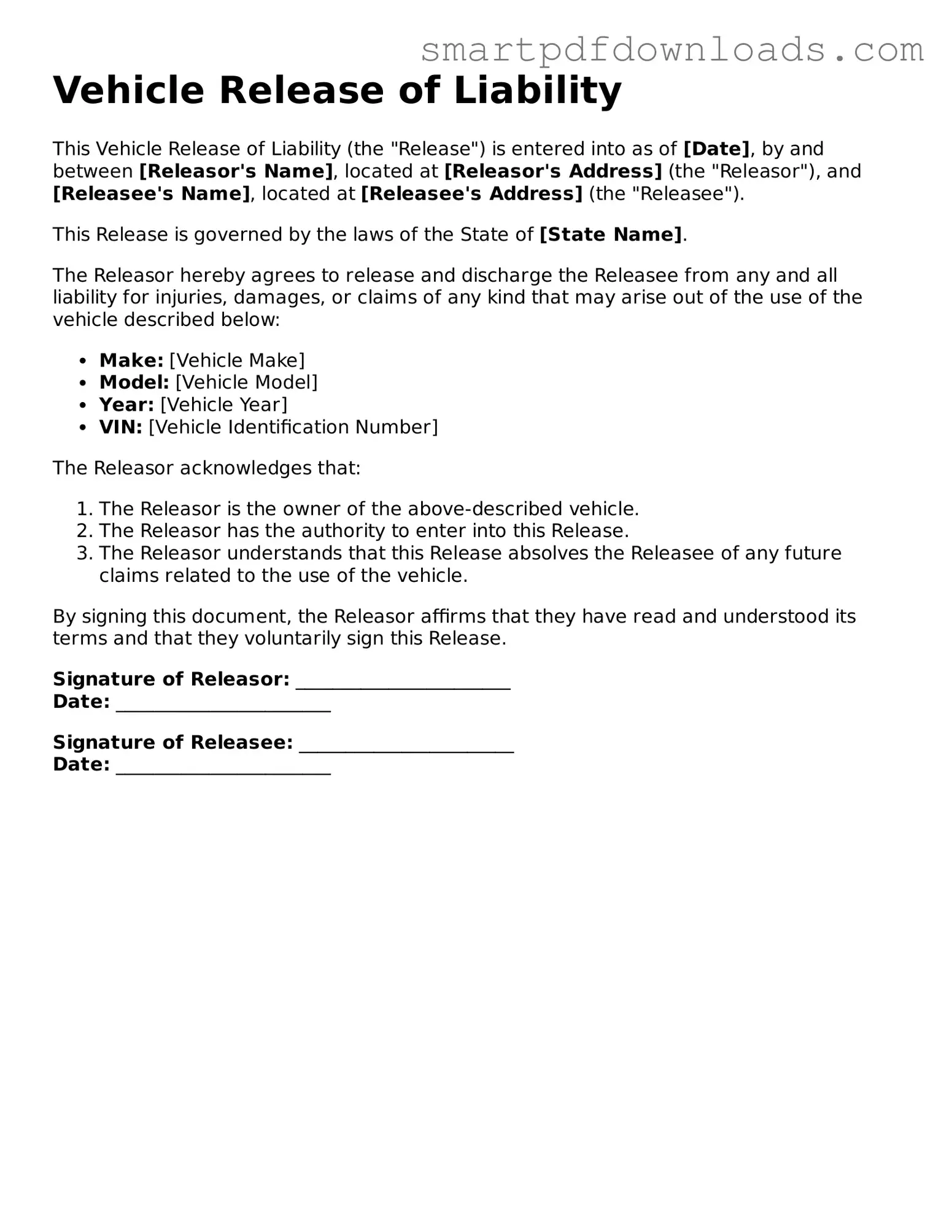Vehicle Release of Liability
This Vehicle Release of Liability (the "Release") is entered into as of [Date], by and between [Releasor's Name], located at [Releasor's Address] (the "Releasor"), and [Releasee's Name], located at [Releasee's Address] (the "Releasee").
This Release is governed by the laws of the State of [State Name].
The Releasor hereby agrees to release and discharge the Releasee from any and all liability for injuries, damages, or claims of any kind that may arise out of the use of the vehicle described below:
- Make: [Vehicle Make]
- Model: [Vehicle Model]
- Year: [Vehicle Year]
- VIN: [Vehicle Identification Number]
The Releasor acknowledges that:
- The Releasor is the owner of the above-described vehicle.
- The Releasor has the authority to enter into this Release.
- The Releasor understands that this Release absolves the Releasee of any future claims related to the use of the vehicle.
By signing this document, the Releasor affirms that they have read and understood its terms and that they voluntarily sign this Release.
Signature of Releasor: _______________________
Date: _______________________
Signature of Releasee: _______________________
Date: _______________________
